Related Research Articles

The kimono (きもの/着物) is a traditional Japanese garment and the national dress of Japan. The kimono is a T-shaped, wrapped-front garment with square sleeves and a rectangular body, and is worn with the left side wrapped over the right side, unless the wearer is deceased. The kimono is traditionally worn with an obi, and is commonly worn with accessories such as zōri sandals and tabi socks.

A skirt is the lower part of a dress/gown or a separate outer garment that covers a person from the waist downwards.
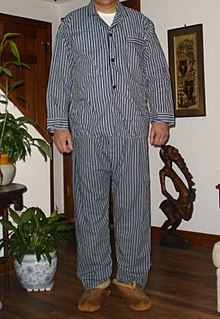
Nightwear – also called sleepwear, or nightclothes– is clothing designed to be worn while sleeping. The style of nightwear worn may vary with the seasons, with warmer styles being worn in colder conditions and vice versa. Some styles or materials are selected to be visually appealing or erotic in addition to their functional purposes.

A peplos is a body-length garment established as typical attire for women in ancient Greece by 500 BC. It was a long, tubular cloth with the top edge folded down about halfway, so that what was the top of the tube was now draped below the waist, and the bottom of the tube was at the ankle. The garment was then gathered about the waist and the folded top edge pinned over the shoulders. The folded-down top of the tube provided the appearance of a second piece of clothing.
The chlamys was a type of an ancient Greek cloak. By the time of the Byzantine Empire it was, although in a much larger form, part of the state costume of the emperor and high officials. It survived as such until at least the 12th century AD.

A bathrobe, also known as a housecoat, is a robe, a loose-fitting outer garment, worn by people. Bathrobes may sometimes be worn after a body wash or around a pool.

The blanket sleeper is a type of especially warm sleeper or footie pajama worn primarily during the winter in the United States and Canada. The garment is worn especially by young children.

A choli is a blouse or a bodice-like upper garment that is commonly cut short leaving the midriff bare, it is worn along with a sari in the Indian subcontinent. The choli is also part of the ghagra choli costume in the Indian subcontinent.

Pantalettes are undergarments covering the legs worn by women, girls, and very young boys in the early- to mid-19th century.
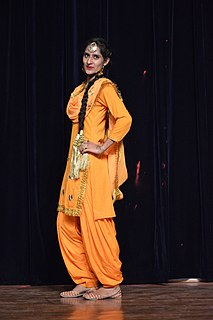
A Patiala salwar is a type of female trousers which has its roots in Patiala City in the Northern region of Punjab state in India. The King of Patiala in earlier times wore a Patiala salwar as his royal dress. The Patiala Salwar has a close resemblance to the Pathani suit, which has loose layers similar to those of a salwar, and a long, knee-length top known as a kameez. The garment is no longer customarily worn by men, but has classically transformed itself with new cuts and styling into a women's garment.
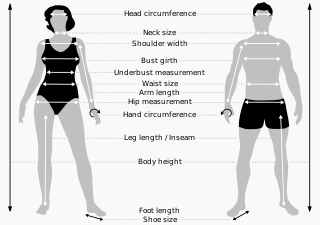
Clothing size refers to the label sizes used for garments sold off-the-shelf. There are a large number of standard sizing systems around the world for various garments, such as dresses, tops, skirts, and trousers. Made-to-order garments require measurements to be taken, but these do not need to be converted into national standard form.
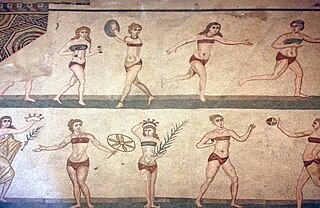
The history of bras is inextricably intertwined with the social history of the status of women, including the evolution of fashion and changing views of the female body.
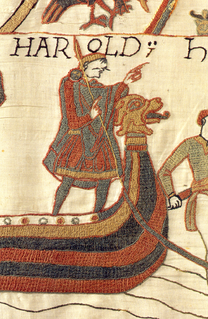
Anglo-Saxon dress refers to the clothing and accessories worn by the Anglo-Saxons from the middle of the 5th century to the eleventh century. Archaeological finds in Anglo-Saxon cemeteries have provided the best source of information on Anglo-Saxon costume. It is possible to reconstruct Anglo-Saxon dress using archaeological evidence combined with Anglo-Saxon and European art, writing and literature of the time period. Archaeological finds have both supported and contradicted the characteristic Anglo-Saxon costume as illustrated and described by these contemporary sources.

Gagra choli or ghagra choli, which is also known as lehenga choli and locally as chaniya choli, is the traditional clothing of women from Indian Subcontinent, notable in Indian states of Rajasthan, Gujarat, Madhya Pradesh, Uttar Pradesh, Bihar, Haryana, Punjab, Himachal Pradesh, Uttarakhand, Jammu and Kashmir, as well as in Nepal. In Punjab it was traditionally worn with the kurti and salwar. It is a combination of the gagra or lehenga and the choli (blouse), however in contemporary and modern usage lehenga choli is the more popular and widely accepted term by fashion designers, trend setters, and boutiques in South Asia, since ghagra is synonymous with the half-slip worn as an undergarment below the sari.

The Tripurantaka Temple was built around c. 1070 CE by the Western Chalukyas. This temple, which is in a dilapidated state, is in the historically important town of Balligavi, modern Shivamogga district, Karnataka state, India. The exterior walls of the temple have erotic sculptures on friezes. These depictions are considered rare in Chalukyan art. Being miniature in size, these are visible only upon close examination. During medieval times, Balligavi was a seat of learning to multiple religious faiths and was home to many monuments and structures built by the Chalukyas. More than 80 medieval inscriptions have been discovered in Balligavi and belong to the Shaiva, Vaishnava, Jain and Buddhist faiths. These inscriptions describe, among other things, the building of temples.

Trousers, slacks, or pants are an item of clothing that might have originated in Central Asia, worn from the waist to the ankles, covering both legs separately.

Traditional clothing is one of the factors that has differentiated this nation from neighboring countries, dating back as far as the Illyrian era.
A kandys, plural kandyes, also called candys, kantuš or Median robe, is a type of three-quarter-length Persian coat. It originally described a leather cloak with sleeves worn by men, but evolved into a garment worn by Athenian women. The kandys is sometimes compared to the much later 17th-19th century military pelisse as worn by Hussars, in the sense that it was a sleeved jacket or coat worn cloak-style.

History of clothing in the Indian subcontinent can be traced to the Indus Valley Civilization or earlier. Indians have mainly worn clothing made up of locally grown cotton. India was one of the first places where cotton was cultivated and used even as early as 2500 BCE during the Harappan era. The remnants of the ancient Indian clothing can be found in the figurines discovered from the sites near the Indus Valley Civilisation, the rock-cut sculptures, the cave paintings, and human art forms found in temples and monuments. These scriptures view the figures of human wearing clothes which can be wrapped around the body. Taking the instances of the sari to that of turban and the dhoti, the traditional Indian wears were mostly tied around the body in various ways.
Adivasah is an upper garment of Vedic times clothing; It is a type of over garment similar to a mantle or cloak.Vedas refers paridhāna (dress) as a set of clothes with these two main components where Vasa is for the lower body and Adivasa for the upper body.
References
- 1 2 "Kamat's Potpourri: Wonderbras of Another Era". www.kamat.com. Retrieved 2021-01-20.
- ↑ Mitra, Rajendralala (1875). The Antiquities of Orissa. Wyman. p. 84.
- 1 2 Begde, Prabhakar V. (1996). Living Sculpture: Classical Indian Culture as Depicted in Sculpture and Literature. Sagar Publications. pp. 57, 64, 66. ISBN 978-81-7082-010-9.
- ↑ Kautilya. Arthashastra.
| | This clothing-related article is a stub. You can help Wikipedia by expanding it. |